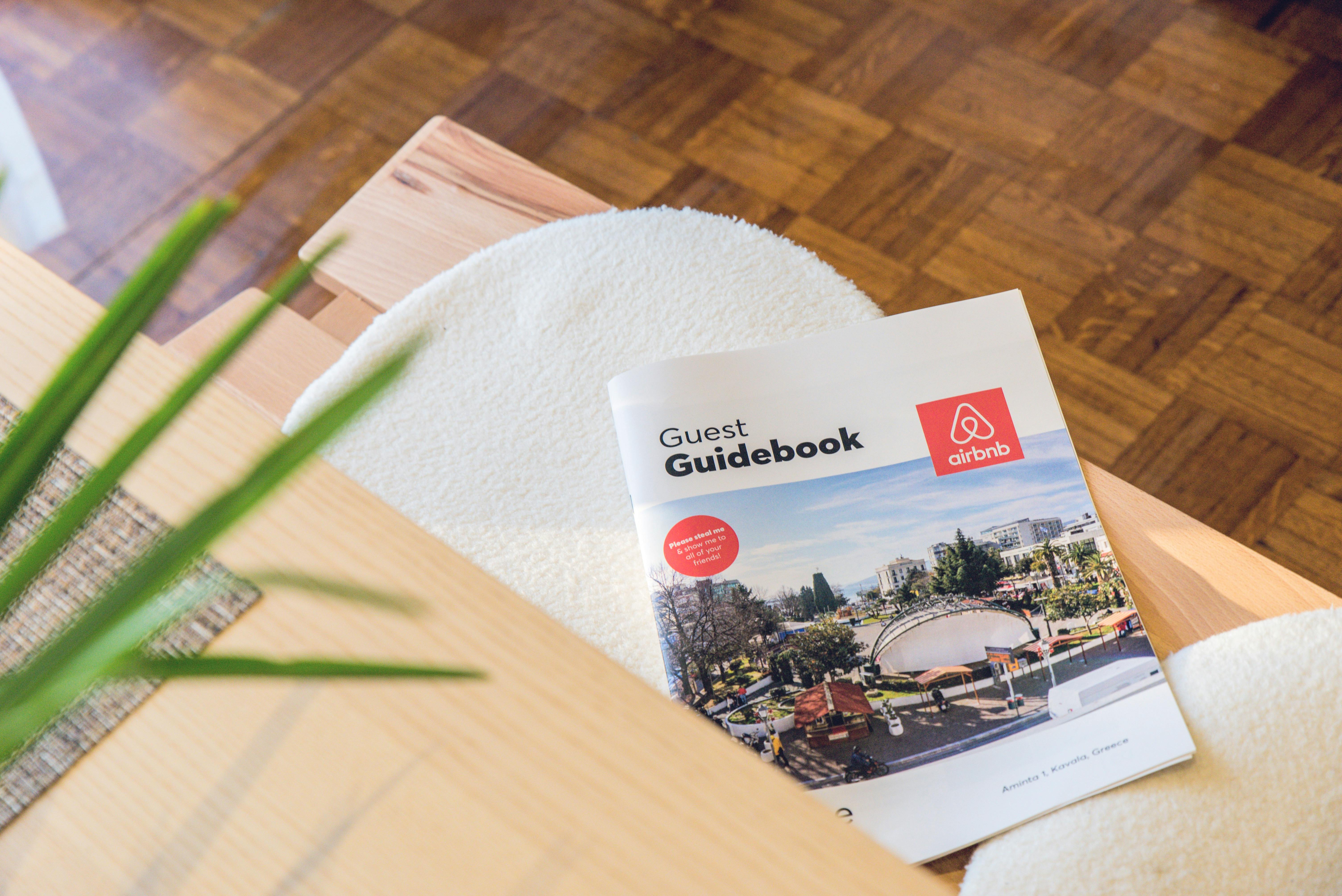- Choose a travel guidebook based on recent publish dates for the most current information.
- Match the guidebook to your travel style: "Fodor's" for luxury, "Lonely Planet" for budget, and "National Geographic Traveler" for cultural immersion.
- Consider layout and format preferences: visual learners may prefer "DK Eyewitness Travel" for visuals.
- "Lonely Planet" is popular for budget and mid-range travel; it offers detailed global coverage.
- "Rick Steves" is ideal for European travel, providing practical and cultural insights.
- "Frommer’s" focuses on budget-friendly advice and practical itineraries.
- Digital guidebooks offer convenience and updates but require battery and internet.
- Physical guidebooks are reliable without tech dependency.
- Adventure, cultural, and food guides provide specific, enriching travel experiences.
- Choose guidebooks based on your personal preferences and destinations.
Ever start packing and wonder which travel guidebook is best for you? With so many options, finding the right guidebook can feel challenging. Whether you love backpacking or a luxurious getaway, a great travel guidebook is essential. But, how do you know which one suits your style? Let’s dive into choosing the best travel guides and explore what they offer for unforgettable adventures.
What Are the Factors to Consider When Choosing a Travel Guidebook?

When picking a travel guidebook, several key elements play a role. The perfect guidebook can make your trip smoother and more fun. Let's dive into what factors should steer your travel guidebook selection.
How Recent Should the Publish Date Be?
When considering a travel guidebook, check its publication date. An updated guidebook is crucial for providing current information. For instance, changes in local laws, currency exchange rates, or entry requirements can directly affect your travel plans. Always opt for the newest edition available. Online resource hubs like Lonely Planet often offer updates and the freshest insights about various destinations.
What Travel Style and Desired Content Should Guidebook Cater To?
Your travel style and what you want to experience should shape your choice of guidebook. Are you a luxury traveler seeking posh hotels, or a backpacker sticking to a budget? Some series focus more on certain styles and offer relevant insights. For luxury travel, "Fodor's" offers upscale hotel recommendations and insider tips. In contrast, "Lonely Planet" gives budget-friendly advice for mid-range and solo travelers, covering more affordable accommodations and dining.
The content scope matters too. If cultural immersion is vital, "National Geographic Traveler" provides rich, narrative-driven content that reveals the soul of a place. Alternatively, those seeking an adventure trip might prefer "Rough Guides," known for off-the-beaten-path recommendations.
Are Layout and Format Important in Traveling?
Yes, the layout and format of a guidebook significantly impact its usefulness on the road. A clear, organized structure helps you find essential details swiftly. Consider how the guidebook presents its information and if it matches your travel style. Visual learners might favor "DK Eyewitness Travel" for its stunning visuals and easy-to-follow design. The images give a sense of the place before you even arrive.
Consider the ease of use. A bulky guidebook can be a hassle to carry, so choose one that's portable. Many travelers prefer e-books for their convenience, especially if packing light. However, a physical book never runs out of battery power and can be a reliable companion when Wi-Fi is elusive. With guidebooks, no matter the format, being well-organized and intuitive to navigate is key.
Selecting the right travel guidebook involves assessing recent publish dates, the travel style it serves, and its layout. Each factor ensures the guide is practical, accurate, and supports your travel goals, making your journey all the more enriching.
Which Are the Top Travel Guidebook Series?

Travel guidebooks are still essential for planning adventures. They cut through the noise of online sources. If you're looking for top-rated travel books or guidebooks for backpackers, let's dive into the most popular travel guide brands.
Why Is "Lonely Planet" Considered the Iconic Series?
"Lonely Planet" is known across the globe. It is the go-to for those traveling on a budget or mid-range. This series offers detailed, accurate guides. But why is it iconic? Because its coverage is unmatched. From popular spots to hidden gems, it covers it all.
The “Lonely Planet” guides are crafted by seasoned travelers. They focus on making each journey memorable. Take even the most remote village; they provide deep insights. They tell you where to eat, sleep, and what to do. However, with so much detail, it might feel overwhelming. There is a vast sea of information. But hey, getting lost in all that knowledge is better than getting lost abroad, right? Keep in mind they take a bit to update new editions in e-book format. Knowing the most recent updates can smooth your travel plans.
What Makes "Rick Steves" a Preferred Choice for European Travelers?
Europe seems like Rick Steves' playground! His guidebooks feel like having a travel companion. Why choose him for Europe? His guides cover cities deeply. They remind you to travel simply. Rick's books simplify even the grandest European trips. His advice is practical, like knowing the best time to see the Eiffel Tower.
Each book aims to dig into local culture. He gives you a taste of true European life. His guidebooks often match the vibe of independent travelers. A standout feature of his books is the personal opinions. He mixes travel facts with strong views. While some might not align with every opinion, the value added is unmatched. Before heading to Europe, a Rick Steves guidebook might be your passport to authentic travel.
How Does "Frommer’s" Stand Out for Budget Travelers?
“Frommer’s” is for the wallet-wise traveler. If you're on a budget, this might be your best friend. What makes Frommer's different? It’s all about practical, budget-friendly advice. Its reliable ratings make sure you don't spend extra when not needed.
These guides dive deep into stretching every dollar. They showcase well-loved affordable places. A testament is Frommer’s knack for practical itineraries. Whether you are wandering in the US or exploring elsewhere, it offers guidance. They can show the route for a successful visit to places like the U.S. Capitol. Families also like these books. They make trips fun while staying on budget.
The main charm of Frommer’s is its real-world application. They may not cover remote places. But for widely-loved spots, they give golden nuggets of wisdom. With them, travel feels richer without spending more.
In the world of travel guidebooks, each series offers something unique. From global pursuits with Lonely Planet to cultured European escapades with Rick Steves, to budget-friendly trips with Frommer’s, there’s a guide out there calling your name. Choose based on your travel style and destination. Let these guides light your path and guide your steps. Happy travels!
How Do Digital Guidebooks Compare to Physical Copies?

Travelers today face a choice between digital and physical guidebooks. You might wonder, "What are the advantages of digital guidebooks?" Precision in answers: Accessibility, convenience, and up-to-date content are key. Digital guidebooks are always at your fingertips, just a tap away on your phone or tablet. They offer real-time updates and interactive maps, so your journey can be smoother and more informed. Digital travel guides like Michelin Travel Guide allow personalization, generating itineraries that match your interests and travel style.
However, digital guidebooks have their limitations. "What limitations do digital guidebooks present?" The main issues include reliance on battery and internet. When your device's battery dies or you lose connection, your travel app becomes useless. While apps like TripIt help organize your travel plans, they can't always provide the tactile reassurance or the unique experience of flipping through pages by hand.
You may ask, "When is a physical guidebook more beneficial?" Answer: In areas with limited connectivity or when immersing in a tech-free journey. Physical books never run out of charge and require no internet. Holding a book lets you mark must-see spots and fold favorite pages. Moreover, the reliability of physical books is significant; they remain consistent, backed by publishers' expertise and accuracy.
Let's not overlook the personal connection a physical book can foster. Imagine sharing stories written in the margins, highlighted sections, or travelers' scribbles marking favorite coffee shops or vibrant markets. There's something unique about a book that's traveled with you, picking up memories along the way.
Yet, both formats have their merits. One important factor: the decision depends on personal needs and preferences. If you love the ease and efficiency of digital, then digital is your way. But if you cherish tangible pages and authenticity, say yes to a printed guidebook. Some travelers carry both: a digital one for quick searches and a physical one for in-depth study and enjoyment.
In conclusion, travel guides are vital companions, whether pixel or paper. Each offers unique benefits and fits different types of adventures. Choose wisely based on your travel plans, style, and the kind of experience you seek. Which one aligns with your travel dreams?
How Can Guidebooks Enhance Specific Travel Experiences?

Finding the right guidebook can transform a trip. When heading overseas, understanding a place's culture can make all the difference. Cultural travel guides are key companions for this. They help travelers understand local traditions and etiquette. With these guides, trips become more than sightseeing tours; they become true explorations of cultural identity. By providing context on festivals, language nuances, and historical influences, cultural guides open a window to a community's soul.
How Do Cultural Travel Guides Aid in Understanding Local Etiquette?
Cultural travel guides are excellent sources of insight. They explain local customs and social norms, which is crucial. If you ever wonder whether a handshake or a bow is polite, these guides have the answers. The information helps avoid awkward situations, ensuring respectful interactions with locals. Your journey becomes smoother, with a deeper appreciation for local life. These guides cover important phrases, dress codes, and dining practices, helping you to fit in seamlessly. The focus is more on experiences than mere visits.
What Role Do Adventure Guides Play in Off-the-Beaten-Path Travel?
For the thrill-seekers among us, an outdoor adventure guide is invaluable. Adventure guides point you toward lesser-known destinations, far from crowded tourist paths. These guides are packed with trekking routes, hidden trails, and survival tips. Your travel gets an adventurous edge, with unique stories waiting at every bend. They ensure you are well-prepared for all conditions you might face. Guides suggest must-try activities in locations curated to keep the experience exciting. Whether you are scaling cliffs, paddling through rapids, or hiking mountains, adventure guides help create unforgettable memories.
Why Are Food and Drink Guidebooks Essential for Gastronomy Enthusiasts?
True foodies know that eating is more than just filling the stomach. It is a cultural experience, best enhanced by food and drink travel guides. These guidebooks point out the best local flavors and top spots to indulge every taste bud. Wondering what's so special about street food in a new city? The answers are right there. You learn about signature dishes, must-try regional specialties, and insider tips on where the locals eat. These books serve as your meal companions, from morning markets to late-night eateries. They spotlight local ingredients, cooking styles, and food history, letting every meal tell a story.
Travelers use guidebooks to dive deep into regions, elevating their experiences. They carry a wealth of knowledge, making each day more informative and engaging. These guides are much more than mere books; they unlock secrets a location might hold. They guide how to traverse the world thoughtfully and savor every aspect. With them in your backpack, whether physical or digital, you are set for enriching adventures. Choose the guidebook that matches your thirst for discovery, and let it lead the way.
Conclusion
Choosing the right travel guidebook takes effort and knowledge. Consider the publish date, style, and format. Top series like "Lonely Planet" or "Rick Steves" cater to different needs. Digital vs. physical guidebooks have distinct pros and cons, so choose wisely. Guidebooks can deeply enrich your travel, whether exploring cultures, venturing outdoors, or indulging in local foods. Use these tips to select a guidebook that enhances your adventure and creates memorable experiences.

